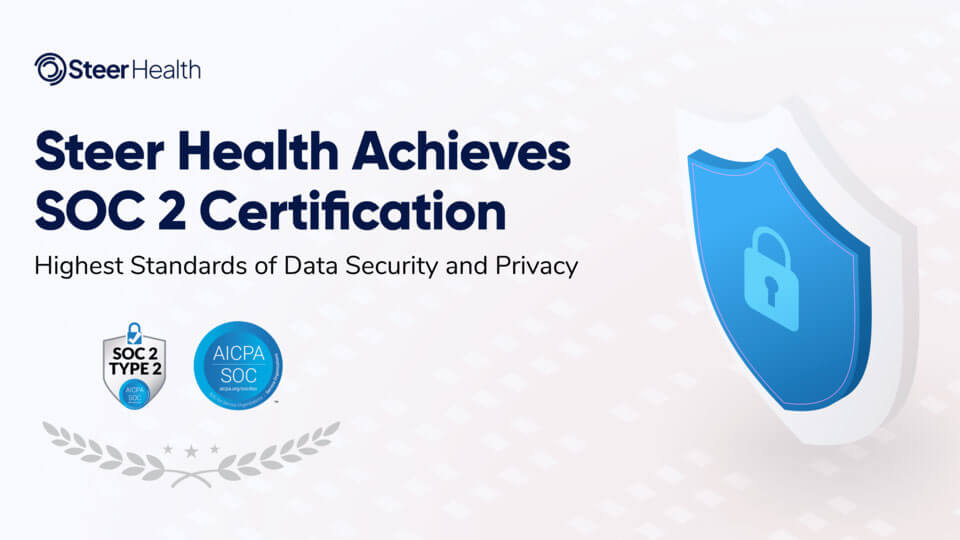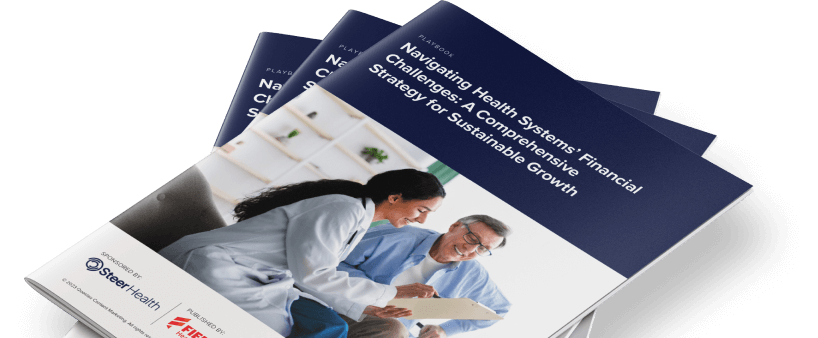The healthcare industry is currently one of the hardest hit by staff turnover. In 2022, the industry lost more than 500,000 employees per month – and the problem isn’t going away anytime soon. According to a study by Elsevier Health, as many as 47% of healthcare workers in the U.S. plan to leave their jobs by 2025.
Staff turnover costs are high. Not only do they leave behind frustrated and overworked colleagues, but they also add another 100% to 150% to costs for training, recruitment, and so on.
To diminish costs, healthcare organizations need to find ways to better retain their existing staff by reducing the workload of nurses and physicians and preventing burnout.
Let’s explore five strategies healthcare executives can implement today to improve staff satisfaction and retention rates.
Offer Mental Health & Stress Management Support
One of the main reasons nurses and physicians leave healthcare facilities is burnout.
Chronic stress can take a toll on anyone, even the healthiest individuals, leading to feelings of helplessness and depression. In pressure environments where staff faces high stress levels and emotional strain, offering support is essential.
Therapy or support groups can be a great source of relief for those feeling isolated, lacking purpose or control, or having low self-esteem. To support your staff in challenging times, offer to cover some of the costs associated with their employees’ therapy sessions, provide group therapy with a dedicated specialist, or even hire a psychologist for their staff to go to for free.
By providing various forms of support to your staff, you can play an active role in helping your team handle difficult and chaotic situations and, in turn, foster a more positive work atmosphere.
Allow for Breaks & Flexible Schedules
Unlike many other industries, healthcare still requires most staff to be present on-site. Yet, people are striving for more flexibility. Often, it’s rigid schedules that are difficult for people with caregiving responsibilities or lifestyle demands that affect morale.
To improve job satisfaction and retention, create more flexibility and offer regular breaks and time for restoration. According to a study published in the PLOS One journal, taking 10‑minute breaks in between tasks already helps prevent burnout.
Since everyone has different needs, be flexible with each individual and ask about their preferences. Whether it’s longer breaks, a greater number of breaks, more day or night shifts, and so on – accommodating each person’s needs will make them feel much more appreciated and loyal to your organization.
Not too far in the future, working from home could also become a viable option. According to a new article in Medical Economics, the percentage of practices engaging in remote patient monitoring is expected to jump from 57% to 76% in the next two years. Remote patient monitoring could thus become the next frontier in allowing for further flexibility in the healthcare sector.
Utilize Healthcare Management Software to Reduce Workloads
Releasing stress and reducing workloads on nurses and physicians requires utilizing advanced technologies like staffing software to automate mundane tasks and manage time-intensive things like documentation and schedules.
EHRs, for example, are cited as a major source of stress and physician burnout. In fact, staff spends hours and hours completing the records. With a variety of new tools, you can streamline EHR workflows. Time-saving templates and automation tools can simplify forms, record and convert voice notes to text, and auto-complete and transfer information between physicians, staff, and facilities.
Another way to reduce the workload on healthcare staff is by empowering patients with self-service options. For instance, patients should be allowed to schedule appointments online, even for emergency visits at hospitals. Patients can even guide their own hospital rounds in the same hospital setting by sending their needs and wish to nurses. Digitizing manual hospital rounds is a win-win for both patients and staff, as patients can take an active role in their healthcare journey. This saves staff time and helps patients feel more in control of their health.
Provide Well-Being & Health Assistance
Providing psychological support is essential to employee well-being, but it’s not the only piece of the puzzle. Adopting wellness habits such as regular exercise, meditation, and eating healthy can help reduce stress, improve mood, and create a more balanced work-life environment.
As a hospital executive, you have several options for supporting your employees’ healthy choices. One way is to offer discounts or free access to healthcare apps on mediation, psychology, and more. You could also invite your employees to participate in a healthy cooking class or give them access to free gym passes to incentivize healthier lifestyles.
There are also exciting new startups like Betterfly that focus on work-life balance in HR management. Butterfly incentivizes employees of connected enterprises to engage in healthy behaviors like exercising or eating well. Points earned through these activities can be converted into life insurance, providing additional motivation to prioritize health and wellness for each team member.
Foster a Culture of Appreciation
Many studies confirmed that, for nurses, the feeling of underappreciation is more stressful than the actual work. A simple recognition or appreciation can make healthcare employees feel valued and supported, reducing the risk of burnout and compassion fatigue.
There are many ways hospital managers can show appreciation for their staff. For example, creating a common channel for recognizing and thanking employees for their hard work can be an effective strategy. This can be an email campaign, a designated area like a communication channel, a billboard in the standard room, or a public recognition program highlighting employees of the month.
Promotions like Employee of the Month campaigns or sending out appreciation campaigns to all staff will help foster a better culture of appreciation and demonstrate the value of happy staff for a thriving organization.
When doing so, it is important not to increase stress by associating these appreciations with competitions or monetary gains but better with words of affirmation and support.
Your Reputation Counts for Talent Acquisition
Investing in your staff’s well-being can help you attract top talent and create a positive patient experience. Your good reputation due to automated processes, less stress, and flexible working hours will ensure that the best talent applies for your open positions.
The same goes for satisfied patients. Statistics show that overworked and stressed staff provide poorer healthcare and lead to bad patient experiences. Likewise, a happy workforce can actually have a positive impact on the patient experience. This means that a positive reputation with patients, as reflected in reviews on Google or Doctoralia, will show potential job applicants that the work environment is likely to be positive.
Healthcare Organizations Need to Change Profoundly
While the healthcare industry can be a stressful and demanding field, there are many strategies hospital executives can adopt to enhance talent retention and job satisfaction among their employees. From promoting healthy habits and wellness initiatives to providing professional development opportunities and recognition programs, hospital executives can show their staff they are valued and supported. By implementing these strategies, hospitals can foster a positive work environment, reduce employee burnout, and improve patient care.
Are you looking for effective strategies to decrease the burden on your staff?
Steer Health’s AI-powered growth and automation platform offers a suite of tools to maximize staff efficiency.
Enhance your talent retention with Steer Health.









